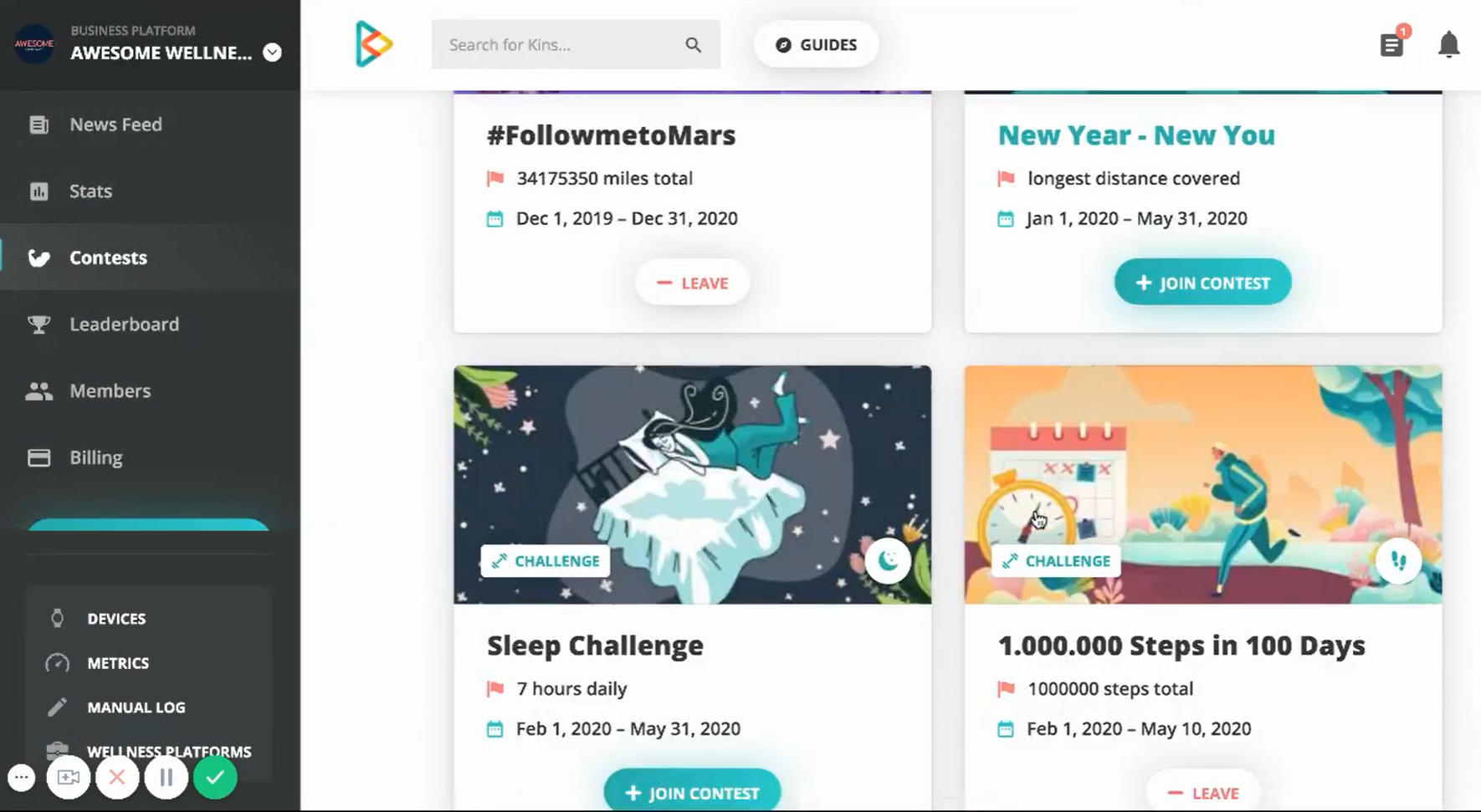Employee wellness program benefits go far beyond free lunches and gym memberships. Learn more about what employee wellness can do for your business in this article.
According to Gartner’s 2021 Hype Cycle for Human Capital Management Technology, the use of employee wellness technology in human resources and talent management is on the rise and expected to reach widespread adoption levels in the next two to five years. If you help select employee benefits at a growing organization, now is a great time to get on board with this emerging technology to ensure a happier, healthier workforce and retain top talent.
Our recent Change Fatigue survey* found that 78% of U.S. employees have experienced more change at their job during the COVID-19 pandemic than at any other time during their career. All of this change has led to more than 70% of those employees experiencing change fatigue, or the feeling of being overwhelmed by the amount of change. Because of this fatigue, employees are feeling stressed and tired at work (48%), looking for a new job (54%), and feeling unsupported by their employer (64%).
One powerful way to help your employees through this change fatigue (and many other job stressors) is through a technology-boosted employee wellness program. These programs can help reduce stress so that your employees feel supported, can be more productive, and want to continue working for you. Regardless of what industry you’re in, if your business isn’t prioritizing an employee wellness program, you’re putting your business at a competitive disadvantage to businesses that are.
To help you fully understand what we’re talking about, let’s take a closer look at employee wellness.
What is employee wellness?
Employee wellness is the overall well-being of an individual employee or group of employees. It encompasses both physical and mental health and well-being.
This can help solve multiple challenges for businesses like yours:
Happier employees will naturally want to stay where they’re happy which reduces turnover.
Happier employees are naturally more productive, helping you reach more organizational goals.
Business aside, helping your employees live happier, balanced lives is very simply the right thing to do and can help your company culture thrive.
There is also software specifically designed to help businesses improve organization-wide employee wellness. This technology typically includes mobile applications, wearable devices, cloud-based dashboards to track progress, on-demand instructional content, incentive and rewards programs, gamification, social networking capabilities, and more.
How can HR departments promote employee wellness?
Following The Great Resignation, workers have a multitude of choices for where they want to work and which companies they want to work for. As a result, a company with a strong culture of promoting employee wellness will be well positioned to attract job seekers.
Leveraging employee wellness technology can take a lot of the heavy lifting out of establishing an employee wellness program, and give businesses an edge on their competition when it comes to hiring and retaining top talent.
Promoting these employee wellness program benefits in company marketing collateral, on social media accounts, and during career fairs and job interviews are great ways to amplify these efforts.
Ready to hire a recruiting agency for your business needs? Browse our list of companies in the following areas:
What does this mean for organizations like mine?
If you’re not already prioritizing and promoting an employee wellness program to attract and retain top talent, you have a golden opportunity to improve employee morale and employee retention and promote a healthier, more productive workforce by taking advantage of an employee wellness program as soon as possible.
What are some HR areas impacted by employee wellness?
Knowing that employee wellness programs can make your business more attractive to job candidates and current employees, the next step is to identify areas to focus your efforts.
Here are three key focus areas to begin your employee wellness efforts in a manageable way, with a focus on starting small and building up.

1. Employee experience
Employee experience is a term that encompasses everything an employee senses and feels while they’re working for your company, from how they feel in the physical space around them to how they interact with fellow employees.
Unlike employee engagement, which can be high or low depending on how engaged a worker is, the employee experience is an all-encompassing term that refers to everything an employee encounters or feels while at work. The experience will certainly affect their engagement level though. For example, if an employee sits in a windowless office with flickering, artificial lighting (which speaks to their experience) their engagement level will likely be low.
While employee wellness software can’t install new windows at your office, it can help HR teams identify focus areas to help improve the overall employee experience. Here are a few features commonly included in employee wellness software that can help with these efforts:
Employee benefits management. This feature helps ensure that employees are aware of and taking advantage of all of the benefits that are available to them, such as gym membership reimbursement, mental health resources, and personal finance guidance.
Employee health coaching and monitoring. Even if your company offers gym membership reimbursement, some employees may want more of a hands-on approach. Some employee wellness software offers a portal where employees can connect with personalized health coaching and monitor their progress toward a healthier lifestyle.
Incentive management. Many companies now offer workplace wellness programs or incentives that provide employees with a stipend or rewards points to spend on anything from ergonomic office equipment to fitness clothing and even outdoors equipment such as tents or bicycles. An incentive management feature helps employees see how much of this stipend they have remaining and what they’re eligible to spend it on.

Using rewards points to select a fitness watch in Awardco employee wellness software (Source)
2. Diversity, equity, and inclusion (DEI)
As we explained above, every part of the employee experience plays into employee wellbeing, and that is especially true for diversity, equity, and inclusion (DEI) issues. For example, if an employee feels excluded or overlooked because of their background, their overall employee wellness will be negatively impacted.
So how can employee wellness software help address diversity, equity, and inclusion issues?
Here are a few recommended approaches:
Incorporate DEI training into your corporate wellness program. Since having a diverse, equitable, and inclusive workplace has been shown to increase employee engagement and improve employee wellness, it only makes sense to make DEI training part of your wellness program. Most employee wellness software includes some type of content library where this can be included.
Make sure that your workplace wellness program includes benefits that appeal to a diverse range of employees. Offering physical activity benefits that help employees get out to the gym or giving rewards for running a certain number of miles per week can be great for employees who enjoy this type of activity. However, imagine how isolating it feels to be constantly reminded of those benefits if you’re unable to use them? Offering a wide range of wellness benefits, from acupuncture to meditation to yoga and beyond, can help ensure that everyone is included.
Consider offering multiple flexible holidays in addition to the most popular holidays. Most employers give their employees the day off for about a dozen federally recognized holidays. Rather than trying to figure out every potential holiday that each of your employees might want to celebrate, you can offer one or several floating or flexible holidays that employees can use at their discretion.

A variety of fitness challenges in inKin employee wellness software (Source)
Voice of the employee (VoE)
As a manager, it can be tempting to “take charge” and find solutions to problems on your own. But this approach is a disservice to your employees. Instead of trying to tell your employees what they need from your wellness program, why not ask them instead?
A voice of the employee (VoE) program can help you do this through surveys, focus groups, and other feedback tools. This way, your corporate wellness programs can specifically target areas that your employees are asking for. For example, if a survey finds that a significant number of your employees are struggling with stress and anxiety, you can increase the budget for mental health therapy and employee assistance programs. Or if numerous employees indicate that they’re struggling to quit smoking, you can increase the budget for a smoking cessation program (and reduce employer health care costs in the process).
The possibilities are almost endless, and it’s nearly impossible to prescribe what your employees need most to improve their physical and mental wellbeing. That’s precisely why it’s so important to ask them these questions. This isn’t just about being a good person and a sympathetic leader, it’s about finding ways to help your employees embrace healthy habits so they can be happier and more productive.
Check out this video to see what a voice of the employee program looks like in action:
UKG Pro Employee Voice Demo (Source)
Want more success? Start with happier, healthier employees
The initiatives we discussed in this article may seem like a lot of work, but it’s worth it. After all, the old saying that “people are a business’s most valuable asset” isn’t just corporate jargon. Your employees are literally what makes your business function. Treat them well, and they will stay longer, produce better results, and drive your business to new heights.
To summarize, here are three focus areas to start with:
Use software to take some of the heavy lifting out of your employee wellness programs.
Align DEI efforts with your workplace wellness efforts to make sure all employees are included and to build a more diverse team.
Survey your employees to uncover gaps in your employee wellness program coverage.
Our corporate wellness software directory features almost 200 solutions that can be filtered by features, platform, and number of users. Once you’ve narrowed down your search with these filters, you can browse hundreds of verified reviews by HR professionals just like you to find the best fit for your corporate wellness program.
Note: The applications mentioned in this article are examples to show a feature in context of a corporate wellness program and are not intended as endorsements or recommendations. They have been obtained from sources believed to be reliable at the time of publication.
